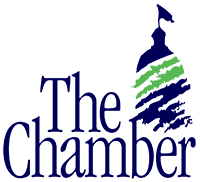Events Upcoming
New Members
Seasonal promotions aren’t just about pushing holiday deals or throwing last-minute signage on the window. For small businesses, they’re strategic inflection points—brief windows when attention surges and spending habits loosen. But too often, what could’ve been a moment of real momentum gets flattened into noise. The trick? Treating seasonal promos not as reactive flash sales, but as rhythmically tuned campaigns—with tension, timing, and personality.
Plan Like It’s a Product Launch
The best seasonal promotions feel inevitable by the time they arrive. That doesn’t happen by accident—it happens because you plan seasonal campaigns several months ahead. Think of it like plotting a series finale: your audience needs teasers, previews, and build-up to care. Brands that plot campaigns in defined phases—pre-launch buzz, mid-campaign engagement, and post-event content—often generate a steadier build and a stronger finish. You’re not just launching a discount. You’re launching a moment. Schedule backward from the seasonal date, use teaser content as openers, and layer each phase with a distinct emotional texture.
Let AI Shoulder the Creative Lift
If you’re short on time or design muscle, you don’t need to freeze up during peak promo season. The creative role of AI art prompts can generate visuals that match your tone, theme, and timeline. A few lines of descriptive text can turn into scroll-stopping images—branded, seasonal, and fast. Whether you need a Valentine’s-themed email header or a Halloween carousel, this kind of assist turns a time crunch into a creative edge.
Bundle for Brains, Not Just Budgets
Everyone’s expecting discounts. That’s why yours can’t feel interchangeable with the competition’s. Instead of slashing prices across the board, use seasonal bundle pricing strategies to reframe your offer around outcomes, not items. Grouping complementary products—like “Backyard BBQ Essentials” or “Winter Skin Survival Kits”—builds a narrative around the purchase. It’s not just cheaper—it makes more sense. And that’s what creates traction. You’re making the decision easier, not just the price lower.
Make Your Emails Feel Handwritten, Not Mass-Printed
The inbox gets brutal during seasonal peaks. Attention spans vanish, open rates nosedive, and your subject line has to work twice as hard. That’s why it matters to segment and personalize email messaging. Skip the “blast” mentality. Slice your list by behavior, by what they browsed, what they bought, how long they’ve been around. Then write like a person. Reference what they engaged with. Echo their tone. One-to-one always beats one-to-many—even when it’s scaled behind the scenes.
Match the Mood, Not the Calendar
Just because the season changed doesn’t mean the vibe did. Your social content shouldn’t scream “It’s fall!” unless it matches how people feel in that moment. Instead, align content with seasonal mood shifts. Some months feel chaotic, others feel quiet. Some beg for color and humor. Others want warmth and rest. Build your copy, visuals, and calls to action around mood, not months. Tone does more than timing ever could.
Local Still Beats Viral (If You Lean In)
Going big online sounds glamorous, but most small business revenue still moves locally. And seasonal promos give you a ready-made excuse to partner locally during community promotions. When there’s a town-wide holiday push or a shop-local event, ride that wave. Don’t just announce your own thing—join theirs. Drop into the shared rhythm. The halo effect of a collective push beats standing solo with a megaphone.
Don’t Vanish After the Season Ends
Here’s the trap: you hit your numbers in December, and then you disappear. But the work doesn’t stop when the promo ends. It resets. The smart play is to create valuable off-season content consistently. Keep posting. Keep showing up. Offer a glimpse of what’s next. Share behind-the-scenes. Talk about what didn’t sell—and why. Every off-season is your chance to prep the next on-ramp.
Seasonal promotions aren’t about hacking urgency. They’re about listening to the clock that your customers already hear. Cultural rhythms. Personal rhythms. Decision rhythms. The businesses that win these windows aren’t necessarily the loudest. They’re the most tuned-in. Plan before the pulse. Speak in season. And carry the energy beyond the sale. That’s how seasonal becomes strategic—and how small becomes unforgettable.


